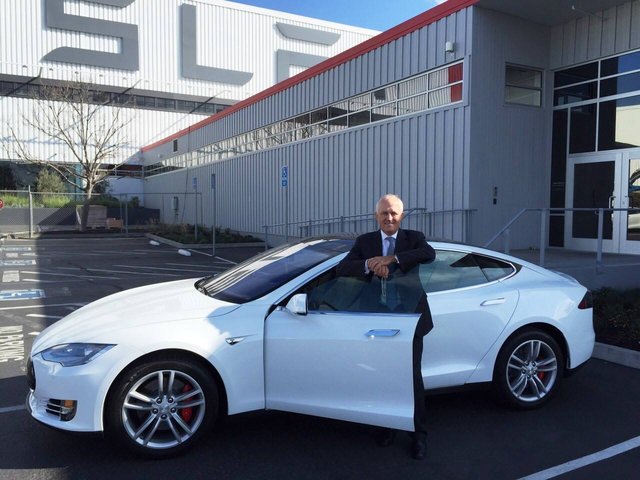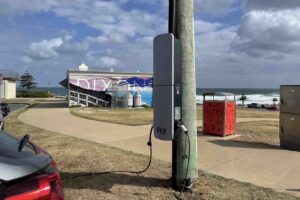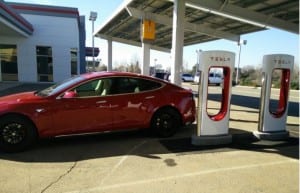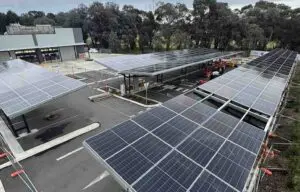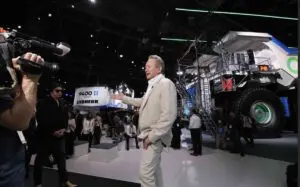Predictions that 2018 could (finally) be the year of the electric vehicle in Australia have gained significant momentum after a promising start in the first few weeks of the new year.
Energy and environment minister, Josh Frydneberg, penned an op-ed published in the Sydney Morning Herald over the weekend declaring a revolution in vehicles – similar to that of mobile phones and digital cameras – was “nigh.”
It was quickly followed by other government ministers canvassing a change in fuel excise tax towards a “mileage” tax – as if the government had recognised, some three years after prime minister Malcolm Turnbull’s gushing visit to the Tesla EV factory in California, that change is inevitable.
“A global revolution in electric vehicles is underway and with the right preparation, planning and policies, Australian consumers are set to be the big beneficiaries,” Frydenberg wrote, noting that key barriers including price and lack of infrastructure would first need to be cleared.
Now, it could be argued that this is a statement of the bleeding obvious, served up by a government that has been widely criticised for being well behind the global pace on driving the uptake of a vital low-carbon technology.
Even Saudi Arabia is making efforts to embrace EVs, and Australia stands almost unique in the western world for having no emissions standards to speak of.
Last year, at the Energy Efficiency summit in Melbourne, Frydenberg talked of the tabloid (read Murdoch media) back-lash to efficiency standards, which the papers likened to a carbon tax. He may have found the courage to act.
Meanwhile, in the US, just a day after Frydenberg’s article was published, auto giant Ford used the Detroit auto show to announce an increase in its planned EV spend to $US11 billion by 2022, and a target of 40 different hybrid and fully electric models in its fleet by that time.
Still, Frydenberg’s op-ed, which has been welcomed by industry leaders – including the the Electric Vehicle Council of Australia – offers a much needed sign of a progressive government ready to embrace positive change – at least in theory.
“The Minister’s comments demonstrate a level of understanding of the size and scope of the benefits available to Australia from the global transition to electric vehicles,” said EVCA CEO Behyad Jafari.
“Australia’s national road fleet is among the least efficient in the developed world. At a time when the electricity sector is increasingly powered by renewables, it makes sense to move our vehicles away from fossil fuels and power them from that clean source or energy.
“What we need now is a co-ordinated national plan to encourage and support the purchase of electric vehicles, through short-term incentives, the deployment of charging infrastructure and strong fleet targets to provide certainty for industry development.”
Certainly, the minister did not hold back on the potential benefits – economic and environmental – of a transition to electric cars.
“Not insignificantly … the fuel cost of a 300km journey in an electric vehicle is currently about a third of that of a petrol-fuelled car,” he wrote.
“The technology around batteries is also improving rapidly. The density of batteries has nearly doubled on average every five years and the price has halved in the same period.”
Frydenberg also noted that certain Chevrolet and Renault models already traveled around 350km without needing to be recharged, and could be recharged in less than 30 minutes using current fast-charge technology.
“Indeed, it’s the view of Australia’s Chief Scientist that by 2025 there might be electric vehicles in production that can drive 1000 kilometres on a single charge. This will be remarkable,” he said. (Chief scientist Alan Finkel owns at least one EV, it should be noted).
On emissions, the article pointed to the CSIRO Energy Roadmap estimates that EVs could reduce CO2 emissions by at least 15 million tonnes by 2030.
Nor did Frydenberg downplay the rapid progress being made in other parts of the world, driven by other much more progressive governments, or the “staggering projections” being posited on future EV market growth.
“China is the largest vehicle market in the world with 25 million annual vehicle sales, with an expectation that electric vehicles will make up 10 per cent of new sales by 2025 and 30 per cent by 2030.”
But will Frydenberg’s words of support for electric vehicles translate into action? It is worth remembering that a similar enthusiasm for electric vehicles was once declared by Turnbull, back in February 2015, not long before he took over the top job.
As we reported at the time, Turnbull gushed praise for the “exhilarating technology” on display at the Tesla Factory, in Fremont, California, which he visited for a tour and a test drive of a Model S.
“The all electric cars are being made in a huge factory that used to belong to GM and Toyota,” Turnbull wrote on his Facebook page. “A reminder of how innovation drives jobs.”
Three years later, however, it is clear that the shift to EVs has been an embarrassing failure on Turnbull’s watch, with total sales actually falling, year-on-year, since 2015.
Frydenberg, meanwhile, has already moved to downplay the role of federal government policy in driving the revolution he so passionately wrote about.
In particular, he has kiboshed any hopes that the Turnbull government might legislate a mandatory vehicle emissions benchmark – a policy lever many argue is essential to drive the shift away from petrol fuelled cars.
“We’re not talking about mandates at present,” Frydenberg said during an interview with Brisbane’s 4BC radio on Monday, arguing that it was the price of the electric vehicles, and lack of supporting infrastructure, that were really holding back sales in Australia.
“What we have seen… from consumers surveys… is that around 50 per cent of the population are interested in buying an electric vehicle and some 20 per cent of them have absolutely looked into it in quite significant detail. …Price range and infrastructure is what … has been holding back the uptake.”
Inconveniently for Frydenberg, those same surveys also showed that almost two thirds of people (64 per cent) want government incentives to encourage the purchase of electric cars, including a majority of supporters of all the major parties. (See chart below).
“Half of all people agree that people purchasing electric vehicles should pay less tax than those purchasing vehicles that run on petroleum,” said Matt Grudnoff, a senior economist at The Australia Institute.
Grudnoff co-authored this TAI report, published in October last year, that concluded Australian governments should “learn from the successes of other countries” and introduce policy incentives to support electric vehicle adoption.
The TAI paper recommended four policies to help Australia transition to electric vehicles: Exempt all electric vehicles from Luxury Car Tax (currently the federal government offers a discount, only); a benchmark for vehicle emissions with penalties paid by vehicles depending on how far above the benchmark they are and subsidies for vehicles depending on how far below the benchmark they are; targeted incentives to encourage the development of EV charging stations in strategic locations; and, for a limited time, to allow electric vehicles to use bus and car pool lanes.
“All up, with their potential to reduce air pollution in urban areas, curb carbon emissions from electricity and the transport fleet, save consumers money and improve vehicle safety standards, electric vehicles should be an easy sell in Australia,” the report says.
Of course, some of the policy measures recommended by the TAI are in the realm of state governments – a fact Frydenberg is keen to note in his article.
“At a state level, governments have responsibility for vehicle registration, stamp duty, government purchasing and are undertaking new charging infrastructure roll-outs. All important areas for reducing the costs for electric vehicle customers and thereby incentivising their uptake.”
And he also acknowledges a need for greater coordination between federal and state governments – something he is working on via the Vehicle Emissions Forum.
“Better coordination of existing and future activities around research and development, charging infrastructure planning, vehicle fleet targets and financial incentives, will bode well for the industry in the exciting decade ahead,” Frydenberg writes.
And indeed it would. Just don’t mention the energy war.

